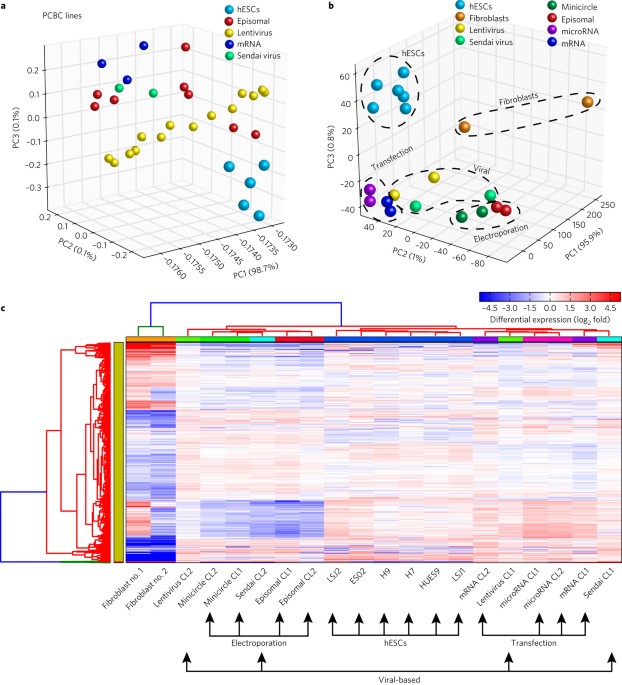- Select a language for the TTS:
- UK English Female
- UK English Male
- US English Female
- US English Male
- Australian Female
- Australian Male
- Language selected: (auto detect) - EN
Play all audios:
TO THE EDITOR: In the most recent issue of _the Journal of Perinatology_, Sanchez et al. report their results of a retrospective review assessing duration of empiric antibiotic use in 414
newborns undergoing an early onset sepsis (EOS) evaluation [1]. 24-hour and 48-hour empiric antibiotic courses were compared for safety endpoints including mortality and re-initiation of
antibiotics within 7 days of discontinuation. The population was comprised of term, preterm and surgical infants admitted at six Nationwide Children’s Hospital network NICUs, with the
majority of infants (62%) being ≥34 weeks gestational age. While the authors also included extremely low birth weight (ELBW) and very low birthweight (VLBW) infants in their cohort, they
composed a much smaller percentage of the population (10 and 19% respectively). The authors found no differences in overall in-hospital mortality (sepsis-related or overall) and noted that
antibiotics were more often restarted within 7 days of discontinuation in the 48-hour group. The authors concluded that a 24-hour antibiotic course for the evaluation of EOS in infants was
therefore safe and preferable. While other studies have proposed shorter antibiotic courses for EOS [2, 3], there are caveats to consider before concluding safety and adapting such practice
changes. For example, the relative rarity of EOS in neonates, especially in full-term and late preterm infants (0.3–0.6 per 1000 livebirths) [4], requires a very large sample size to detect
one true case of EOS. In this sample size of 414 newborns, only 3 infants (1 in the 24-hour group and 2 in the 48-hour group) had positive blood cultures, again proving the paucity of
infection in this population. While the authors should be commended in their efforts to decrease antibiotic use in the NICU, given the mounting data regarding antibiotic exposure and
subsequent risk of neonatal morbidity and mortality [5,6,7,8,9], the power analysis used to plan this study in order to detect differences between the two antibiotic groups should have been
reported. If one were to attempt to answer the question of safety for these two approaches, given the authors’ focus on no difference with respect to safety, the appropriate design would be
a non-inferiority trial, which requires an even larger sample size. Post-hoc analysis based on the results available to us in this publication, we can examine the potential for
non-inferiority or equivalence (to allow the conclusions made by the authors) via a measure of association (in this case, odds ratio, OR) and its 95% confidence interval. If we were to have
planned the study a priori with non-inferiority in mind, we would set an OR level that would conclude that the new paradigm, the 24-hour group, was “safe” with respect to sepsis-related
deaths. So for instance, we may say an OR = 1.1 (24-hour vs. 48-hour) would be considered safe. If the upper bound of the 95% CI does not contain that threshold, then we could conclude that
24-hour is no worse with respect to sepsis than 48 h. In this case, post-hoc, the OR cannot be computed because of the 0 cell in sepsis-related mortality in the 48-hour group, but using the
Haldane-Anscombe correction [10, 11] (adding 0.5 to each cell), the observed OR = 7.90 with a 95% CI = (0.41, 154.0). The point estimate and corresponding confidence interval do not provide
evidence to support the authors’ conclusion that the 24-hour regimen is no worse than the 48-hours with respect to sepsis-related deaths. When the authors discuss the ≤28 weeks’ gestation
infants, which are the highest risk group for EOS (18.47 per 1000 live births) [12], they correctly state that one dose of gentamicin covers this sub-group for 48 h. Therefore, while many of
these infants were characterized as being part of the 24-hour group, they were effectively receiving 48-hours of empiric gram-negative coverage. This is reassuring, as this subgroup is at
the highest risk for gram-negative EOS (usually _Escherichia coli_) [12]. However, given the differences in antibiotic pharmacokinetics for the ≤28-week gestational age group, it would be
appropriate to keep these infants separate from the overall analysis. While this will require an even larger sample size, focusing on a cohort of infants ≥34 weeks’ gestation who meet
criteria for empiric antibiotics per the Kaiser Sepsis Calculator, will allow for a more applicable comparison of safety endpoints. Readers should be reminded that finding no statistical
difference between two approaches does not mean that the approaches are, by default, similar. REFERENCES * Sánchez PJ, Prusakov P, de Alba Romero C, Zamora-Flores E, Reyes Escamilla MC,
White NO, et al. Short-course empiric antibiotic therapy for possible early-onset sepsis in the NICU. J Perinatol Off J Calif Perinat Assoc. 2023; https://doi.org/10.1038/s41372-023-01634-3.
In Press. Online ahead of print. * Ur Rehman Durrani N, Rochow N, Alghamdi J, Pelc A, Fusch C, Dutta S. Minimum duration of antibiotic treatment based on blood culture in rule out neonatal
sepsis. Pediatr Infect Dis J. 2019;38:528–32. Article PubMed Google Scholar * Janjindamai W, Phetpisal S. Time to positivity of blood culture in newborn infants. Southeast Asian J Trop
Med Public Health. 2006;37:171–6. PubMed Google Scholar * Puopolo KM, Draper D, Wi S, Newman TB, Zupancic J, Lieberman E, et al. Estimating the probability of neonatal early-onset
infection on the basis of maternal risk factors. Pediatrics 2011;128:e1155–1163. Article PubMed PubMed Central Google Scholar * Cantey JB, Huffman LW, Subramanian A, Marshall AS, Ballard
AR, Lefevre C, et al. Antibiotic exposure and risk for death or Bronchopulmonary Dysplasia in very low birth weight infants. J Pediatr. 2017;181:289–293.e1. Article PubMed Google Scholar
* Alexander VN, Northrup V, Bizzarro MJ. Antibiotic exposure in the newborn intensive care unit and the risk of necrotizing Enterocolitis. J Pediatr. 2011;159:392–7. Article PubMed
PubMed Central Google Scholar * Baranowski JR, Claud EC. Necrotizing Enterocolitis and the preterm infant microbiome. Adv Exp Med Biol. 2019;1125:25–36. Article PubMed Google Scholar *
Cotten CM, Taylor S, Stoll B, Goldberg RN, Hansen NI, Sánchez PJ, et al. Prolonged duration of initial empirical antibiotic treatment is associated with increased rates of necrotizing
enterocolitis and death for extremely low birth weight infants. Pediatrics 2009;123:58–66. Article PubMed Google Scholar * Kuppala VS, Meinzen-Derr J, Morrow AL, Schibler KR. Prolonged
initial empirical antibiotic treatment is associated with adverse outcomes in premature infants. J Pediatr. 2011;159:720–5. Article CAS PubMed PubMed Central Google Scholar * Anscombe
FJ. On estimating binomial response relations. Biometrika 1956;43:461–4. Article Google Scholar * Haldane JBS. The mean and variance Of Χ2, when used as a test of homogeneity, when
expectations are small. Biometrika 1940;31:346–55. Google Scholar * Stoll BJ, Puopolo KM, Hansen NI, Sánchez PJ, Bell EF, Carlo WA, et al. Early-onset Neonatal Sepsis 2015 to 2017, the rise
of Escherichia coli, and the need for novel prevention strategies. JAMA Pediatr. 2020;174:e200593. Article PubMed PubMed Central Google Scholar Download references AUTHOR INFORMATION
AUTHORS AND AFFILIATIONS * Department of Pediatrics, Division of Neonatology, Yale School of Medicine, New Haven, CT, USA Noa Fleiss * Department of Pediatrics, Pediatric Research Hub,
University of Florida, Gainesville, FL, USA Matthew J. Gurka * Department of Pediatrics, Division of Neonatology, University of Florida, Gainesville, FL, USA David J. Burchfield Authors *
Noa Fleiss View author publications You can also search for this author inPubMed Google Scholar * Matthew J. Gurka View author publications You can also search for this author inPubMed
Google Scholar * David J. Burchfield View author publications You can also search for this author inPubMed Google Scholar CONTRIBUTIONS All authors have contributed equally to this work.
CORRESPONDING AUTHOR Correspondence to Noa Fleiss. ETHICS DECLARATIONS COMPETING INTERESTS The authors declare no competing interests. ADDITIONAL INFORMATION PUBLISHER’S NOTE Springer Nature
remains neutral with regard to jurisdictional claims in published maps and institutional affiliations. RIGHTS AND PERMISSIONS Reprints and permissions ABOUT THIS ARTICLE CITE THIS ARTICLE
Fleiss, N., Gurka, M.J. & Burchfield, D.J. Short course antibiotic therapy: When is no difference the same?. _J Perinatol_ 43, 683–684 (2023). https://doi.org/10.1038/s41372-023-01671-y
Download citation * Received: 06 March 2023 * Revised: 28 March 2023 * Accepted: 31 March 2023 * Published: 07 April 2023 * Issue Date: June 2023 * DOI:
https://doi.org/10.1038/s41372-023-01671-y SHARE THIS ARTICLE Anyone you share the following link with will be able to read this content: Get shareable link Sorry, a shareable link is not
currently available for this article. Copy to clipboard Provided by the Springer Nature SharedIt content-sharing initiative



